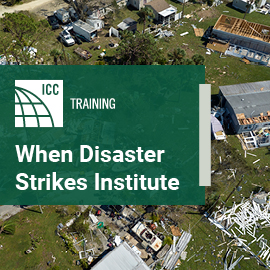
UL’s Fire Safety Research Institute Recommends IWUIC Adoption Following Lahaina Fire
Following the Lahaina Fire in Maui, UL’s Fire Safety Research Institute recommends adoption of the International Wildland-Urban Interface Code.
Recognizing how modern building codes save lives and protect property from fire, earlier this year UL’s Fire Safety Research Institute (FSRI) released a report recommending the adoption of the International Wildland-Urban Interface Code® (IWUIC) following the Lahaina Fire in Maui, Hawaii.
The 2023 fire burned more than 2,000 structures and killed 102 people, prompting Hawaii Governor Josh Green and Hawaii Attorney General Anne E. Lopez to commission the Lahaina Fire Forward-Looking Report.
Phases of the Maui Wildfire Investigation
The report (Phase Three) makes a number of critical recommendations relating to building codes, including a recommendation that county fire departments and county planning departments take a second look at the review and adoption processes for codes and standards.
The report’s authors believe that building codes/standards should be driven by public safety and effectively address wildfire risks. They also want fire prevention chiefs to prioritize and appropriately staff organizational structures to ensure the effective and efficient implementation of updated codes.
In Phase Two, Lahaina Fire Incident Analysis, the report recommends that stronger Wildland-Urban Interface (WUI) codes, such as the International Code Council’s IWUIC, should be used to reduce the risk of embers penetrating building envelopes. The report also recommends the adoption and enforcement of contemporary codes and standards for construction in wildfire prone areas, which is a direct recommendation for IWUIC.
Moreover, Maui County was a bit behind in code adoption (enforcing the 2006 editions of the International Building Code® and International Residential Code®) at the time of the fire. Per the report, current practices must be reviewed to ensure they meet the requirements of Hawaii Revised Statutes (HRS) 107-28, which require the latest building and fire codes to be adopted every three years.
Use Modern Building Codes for a Safer, More Resilient Built World
Modern building codes, particularly the IRC, IBC and IWUIC, help protect life and property from the deadly and destructive forces of fire.
Whether originating in an area of high winds and dry vegetation, caused by faulty wiring or ignited in an accident at home or work, modern building codes serve as a frontline defense. They ensure that buildings are constructed properly, are less susceptible to the spread of fire and are equipped with the necessary safety and warning mechanisms, such as smoke alarms and sprinklers.
By adopting modern building codes, the future of the built world will be far safer and much more resilient.
To learn more about the wildland-urban interface, visit the Code Council’s dedicated webpage here.








